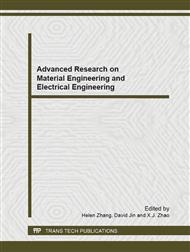p.289
p.293
p.297
p.302
p.306
p.312
p.321
p.325
p.330
A Modified Maximum Power Point Tracking Algorithm under Partial Shading Conditions
Abstract:
Photovoltaic array output characteristics under partial shading conditions have multi local maximum power points, but traditional maximum power point tracking methods failed to identify global maximum power point. Output characteristics of shadowed PV array under different illumination were simulated by Matlab software. The rule between voltage of possible local maximum power point and the open circuit voltage was summarized. According to this rule, a modified algorithm based on the Incremental Conductance method was put forward. Simulations results indicated that the proposed MPPT algorithm can accurately track the global maximum power point under uniform illumination and partial shading conditions. It can improve the efficiency of PV system.
Info:
Periodical:
Pages:
330-334
Citation:
Online since:
March 2013
Authors:
Price:
Сopyright:
© 2013 Trans Tech Publications Ltd. All Rights Reserved
Share:
Citation:


